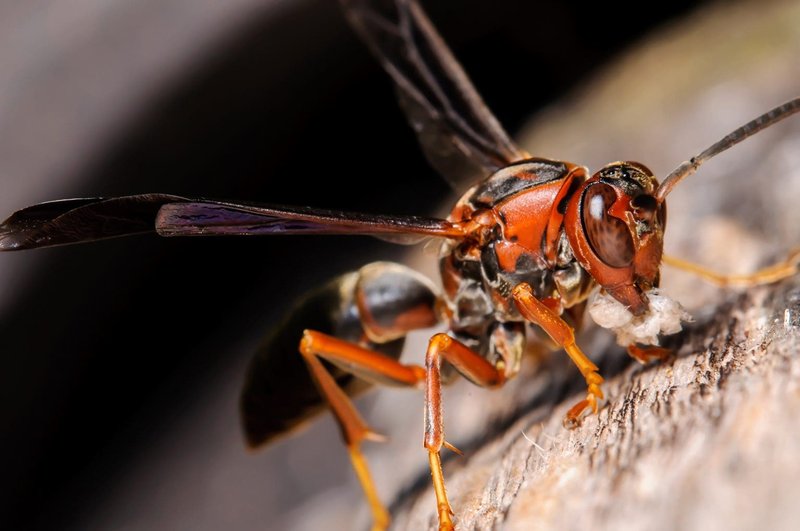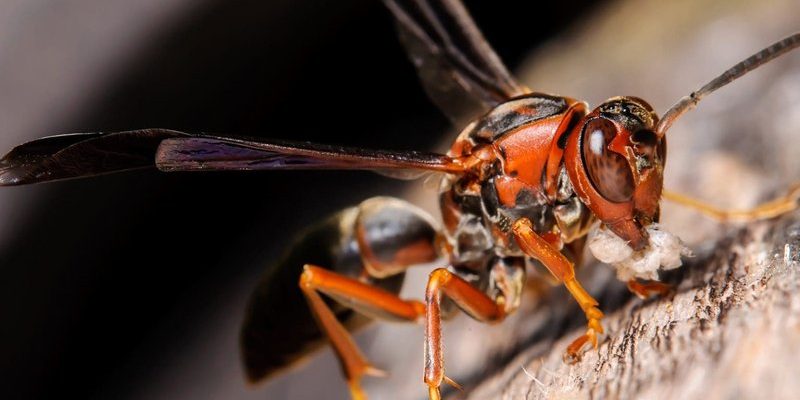
Paper wasps, which are known for their unique nests made of a paper-like substance, are often misunderstood. They belong to the *Polistes* genus and are typically seen hanging around outdoor spaces where food is plentiful. If you’ve ever seen one, you might think they look a bit intimidating. But how dangerous are they really, especially to us humans? Let me break it down for you over a cup of coffee.
What Are Paper Wasps?
Paper wasps are part of the wasp family and are recognized for their slender bodies and long legs. They are usually yellow or brown, marked with black, giving them a distinct appearance. Unlike some of their more aggressive cousins, paper wasps are generally more laid-back and tend to avoid confrontation.
These insects get their name from the nests they build, which resemble an upside-down umbrella. The nests are created using a blend of plant fibers and saliva. This paper-like substance helps protect their larvae and serves as a shelter for the colony. You might spot these nests hanging in eaves, branches, or even in garages.
Paper wasps are often mistaken for yellow jackets due to their color. While yellow jackets can be more aggressive and are known for their painful stings, paper wasps usually only attack when they feel threatened. So, it’s important to recognize what you’re dealing with to understand the level of risk involved.
Are Paper Wasps Aggressive?
Honestly, it all comes down to their behavior. Paper wasps are not naturally aggressive. Most of the time, you’ll find them quietly going about their business, often busy catching insects to feed their young. They prefer to fly away rather than dart at you, unlike some other wasp species.
However, here’s the thing: if you accidentally disturb their nest or get too close, they might see you as a threat. This is when they can become defensive. If that happens, expect them to buzz around you. If they feel cornered, they won’t hesitate to sting. And trust me, this sting can be quite painful!
To avoid any unwanted encounters, it’s best to keep your distance from their nests and not provoke them. If you see a nest in a high-traffic area, consider informing a pest control expert rather than trying to handle it yourself.
What Happens If You Get Stung by a Paper Wasp?
If you’re stung by a paper wasp, your body might react in a few different ways. For most people, the sting is just a momentary sharp pain, similar to a bee sting. The sting will usually lead to some swelling and redness in the area. Although it’s uncomfortable, it typically goes away in a few hours.
However, not everyone is affected the same way. Some individuals might have a more severe reaction, experiencing symptoms like:
- Intense swelling
- Itching
- Nausea
- Difficulty breathing (in rare cases)
If you find yourself having trouble breathing or your reaction seems unusually severe, this could indicate an allergy. In this situation, you should seek medical help right away. It’s always good to be cautious when dealing with stings from any flying insect.
How to Treat a Paper Wasp Sting
If you do get stung, don’t panic! Here’s how you can manage the pain and swelling at home:
1. Remove the Stinger: If it’s still in your skin, try to pull it out gently without squeezing it.
2. Clean the Area: Wash the sting site with soap and water to avoid infection.
3. Cold Compress: Apply ice wrapped in a towel to reduce swelling and numb the pain.
4. Pain Relief: Over-the-counter pain relievers like ibuprofen or acetaminophen can help ease discomfort.
5. Monitor Symptoms: Keep an eye on the sting site. If it worsens or you notice any severe symptoms, don’t hesitate to contact a healthcare professional.
Taking these steps can help make the experience more manageable. And remember, staying calm and addressing the issue can really make a difference.
Are There Benefits to Having Paper Wasps Around?
You might be surprised to learn that paper wasps provide certain benefits. They’re not just buzzing nuisances. These insects play an important role in controlling pest populations. By feeding on caterpillars and other garden pests, they help keep your garden healthy.
Think of paper wasps as nature’s pest controllers. While they may not be cuddly or adorable like other insects, they contribute to the balance of the ecosystem. So, while it’s wise to be cautious around them, it’s also a good reminder that every creature has its place in nature.
If you’re worried about wasps around your home, consider planting specific flowers that attract beneficial insects. This can help create a balanced environment where wasps focus on pests instead of bothering you and your family.
How to Prevent Paper Wasps from Building Nests
If you’re looking to avoid encounters with paper wasps, prevention is key. Here are some tried-and-true methods to keep them from setting up shop near you:
– Seal Entry Points: Make sure to check your home for any cracks or gaps that wasps could use to enter. Sealing these can help keep them out.
– Remove Food Sources: Keep outdoor dining areas clean. Wasps are attracted to sugary drinks and food leftovers, so be vigilant.
– Use Decoys: Some people have success with fake wasp nests. Paper wasps are territorial and might avoid areas where they believe other colonies already exist.
– Regular Inspections: Periodically check your yard and home for signs of nests forming. The sooner you address the issue, the easier it is to manage.
Creating a wasp-free zone can go a long way in making your outdoor spaces more enjoyable.
So, are paper wasps dangerous to humans? The truth is a bit nuanced. While they can sting and cause discomfort, they tend to be non-aggressive unless they feel threatened. Their role in the ecosystem is valuable, controlling pests while adding to the complexity of nature.
Knowing how to handle these insects safely can help you coexist without fear. Respect their space, take precautions, and remember that while they might give you a good scare now and then, they’re just trying to do their job in the natural world.
Now that you have a better understanding of paper wasps, I hope you feel more informed and ready to handle any waspy situations that may come your way. Happy outdoor adventures!

